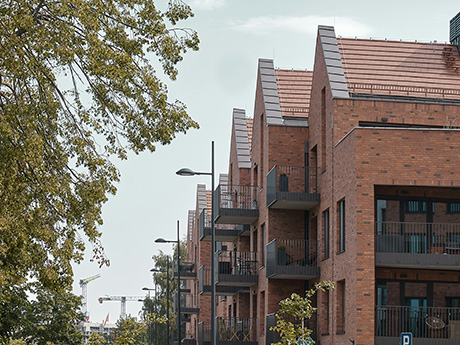Lee & Associates’ 2025 Q2 North America Market Report looks back at shrinking (or negative) net absorption for industrial, office and retail sectors in the last quarter. Meanwhile, multifamily tenant demand beat previous expectations in the same three months, as a feared recession failed to materialize.
The mix of factors for absorption varied by property type: industrial and office markets saw increases in vacancy, while competition for retail space remained high, even in the face of high-profile closures.
Lee & Associates’ full market report is available to read here (plus detailed vacancy rates, cap rates by city, market rents, square footage information, information on Canadian markets and more). The recaps for industrial, office, retail and multifamily sectors below detail trends and outlooks for each property sector in the remainder of 2025.

Industrial Overview: Vacancies Rise, Rent Growth Slows
Concern over the impact of tariffs has added to slowing tenant growth in logistics and manufacturing across North America. But the continued easing demand has resulted in more choices and benefits for users that have been subjected to a prolonged stretch of steep rent growth.
Vacancies in the United States have risen to 7.4 percent, a decade-long high, while deliveries continued to outpace tenant expansion. Net absorption fell 8.1 million square feet in the first half, including negative 5.9 million square feet in the second quarter.
Overall rent growth in the United States year to date has fallen to 1.7 percent compared to 4.1 percent through the first half a year ago and an average of 7 percent in the last five years.
Nevertheless, due to record rent gains during the COVID years, many leases still are renewing at higher rates after being marked to market. This is seen chiefly with smaller spaces in the United States, where available inventories remain tight.
New leasing volume excluding renewals rose in most markets and soared more than 50 percent above prior two-year averages in markets in the Midwest and South, including Saint Louis, Richmond, Columbus, Nashville, Greenville, Memphis, Charlotte and Greensboro. San Francisco and California’s Inland Empire also saw improved volume.
Despite rising 80 basis points through the first half, the vacancy rate for specialized and typically smaller spaces nationally is 4.2 percent. Some of the most acute shortages of small space are in Nashville, Jacksonville, Orlando, Tampa and Charlotte.
The inventory of logistics buildings of 100,000-500,000 square feet has grown by 14 percent since 2021 and the vacancy rate for big-box space stands at 8.3 percent, the highest since 2012. But tariffs present a risk for warehouse-and-distribution buildings, particularly in major West Coast port-dependent markets that are seeing slowing imports. After 10 months of steady growth, container traffic through the Port of Long Beach in May was down 8.2 percent and off 5 percent at the Port of Los Angeles.
Nearing the end of a record wave of new development, U.S. industrial building deliveries are moderating. New construction starts fell to just 2.6 million square feet in the fourth quarter of 2024, a record quarterly low. But as the construction pipeline thins, supply growth will likely outpace net absorption in upcoming quarters. Austin, Indianapolis, Greenville/Spartanburg, Phoenix and San Antonio stand out as markets with risks of prolonged elevated availability, particularly with distribution buildings.

Office Overview: Tenant Contractions Resume
Overall recent improvement in tenant growth across North American office markets had been showing signs of a recovery with some momentum. But the first positive United States office trend since COVID hit a wall in the second quarter.
U.S. net absorption was in the red 16.3 million square feet in the second quarter of this year, reversing 11.7 million square feet of tenant expansion in the three previous quarters. The contraction pushed up the vacancy rate 30 basis points to a record 14.2 percent.
Class A tenants relinquished 6.9 million square feet of space in the second quarter, pushing up the vacancy rate 40 basis points to 21.2 percent. Class B buildings posted 8.2 million square feet of negative net absorption. The second-quarter vacancy rate ticked up 20 points to 12.7 percent.
There had been recent signs that the recovery could have staying power as long as economic conditions remained positive. Absorption in Class A buildings had been positive for only the second time since 2021 and older buildings, which had been steadily losing occupancy, saw absorption stabilized. With attendance rising gradually and job growth slowing, a slow recovery and elevated vacancy rates looked likely.
In capital markets, the values for investment-grade buildings aimed at traditional office tenants have fallen by up to half. Since 2022, institutions and REITs have been net sellers, giving private buyers and owner-users opportunities to capitalize on discounts that often are below replacement costs. Values are likely to dip further as more liquidity leads to another round of price discovery.
The continued occupancy losses in the United States since early last year have been mitigated by growth in about half of the nation’s top 50 office markets, including a surge in New York. But the same trend has failed to materialize in other gateway cities, while many secondary markets are facing slow job growth and still are losing occupancy. Meanwhile, office-using job growth has nearly stalled.
Typical requirements continue to trend toward smaller spaces, and many markets report that space consolidations are not yet over. The typical deal size remains about 15 percent less than the average from 2015 to 2019.
Fewer new buildings are appearing on the market. The 45 million square feet delivered in 2024 were the least since 2012. Forty-one million square feet are projected for this year. Eight of the last 10 quarters are among the lowest number of starts on record. Despite the national trend of a shrinking pipeline, some markets face supply pressures. Austin leads major markets with 3 percent of its inventory under construction. Miami and Boston both have about 2.5 percent of inventory in the pipeline.

Retail Overview: Weakening Demand Falls in First Half
Overall demand for North American retail property moderated in the first half of 2025 with declining net absorption in the United States turning negative for the first time since during the COVID lockdown, in part due to increased bankruptcies and recent store closures.
Net absorption was negative 8,913,320 square feet in the second quarter. That follows a first-quarter 7,089,219-square-foot contraction. Annual net absorption has been falling steadily since peaking at 70.8 million square feet in 2021. There were 67 million square feet absorbed in 2022, 43 million square feet in 2023 and 22.2 million square feet last year. Included in the current negative reading is a 24 percent increase from the first quarter of 2025 in the move-out rate to more than 108 million square feet.
Move-outs, which include spaces subject to the bankruptcy process, averaged 84 million square feet in the last three years. The jump is tied directly to space occupied by Big Lots, Conn’s, Joann, Forever 21, Party City, Red Lobster, T.G.I. Fridays and other merchants and restauranteurs that began working through severe financial and legal woes in the last 18 months.
Despite changing tastes and an upturn in brand-name tenants in distress, the nationwide market of 11.9 billion square feet remains fundamentally tight in the second quarter with overall vacancy at 4.3 percent, close to the historic low. The vacancy rate was 2.7 percent for general retail, the largest category with 6.5 billion square feet or 55 percent of total inventory. Neighborhood centers totaled 2.9 billion square feet for 24 percent of inventory and were at 6.3 percent vacancy. Strip and power centers totaled 1.5 billion square feet and averaged just less than 5 percent vacancy. Malls totaled 876 million square feet and were at 8.8 percent vacancy.
Tenants and brokers in the field continue to report healthy competition for quality space, resulting in available space backfilling at the fastest pace in nearly 15 years.
Increased competition for space also has been driven by the limited amount of new developments across the United States since 2010. From 2000 to 2009, approximately 300 million square feet of retail space were delivered annually, of which nearly 40 percent was available for lease. Much has changed. Only 81 million square feet of new retail space has been delivered annually since early 2020, with the vast majority comprising build-to-suit projects. This has left fewer second-generation space options for tenants seeking to expand.
Strong activity in the property sales market has occurred since last year. Retail investment sales gained momentum in 2024 with annual volume reaching $59 billion — an 8 percent increase from the prior year. That momentum extended into 2025. First-quarter volume climbed 11 percent beyond the same period in 2024, and April’s preliminary figures came in 45 percent higher than a year ago.
Multifamily Overview: Reacting to Downturn Predictions
Healthy multifamily tenant demand held steady in the second quarter across the United States. Strong second-quarter net absorption in the United States totaled 136,007 units, as tenants shrugged off recession forecasts and extended the stretch of robust demand that began early last year. In the last six quarters 816,814 units have been leased up. New York and large markets in the South and Southwest, such as Dallas and Phoenix, have been growth leaders in the first half.
The second-quarter decline in overall vacancy by 10 basis points to 8.1 percent is attributed to the higher quality Class A segment where demand has exceeded supply.
The solid rental demand through the second quarter of 267,273 units follows the 548,911 units leased in 2024, the second most on record. Accelerated demand for apartments has been supported by steady employment and economic growth. Furthermore, older members of Gen Z are entering the prime apartment rental age, while more baby boomers are reaching an age where renting becomes a better option.
As apartment demand is growing at an above-average pace, the development cycle has peaked and is winding down. The annual inventory growth rate has fallen from 3.6 percent in 2024 to 1.3 percent through the first half, the lowest percentage since 2013. Net deliveries have declined for three consecutive quarters, falling nearly 30 percent to less than 130,000 units in the first quarter. Forecasts show that as few as 80,000 units are due for fourth-quarter delivery. Construction starts have fallen to a decade-plus low due to the extended lease-up periods developers are experiencing, higher capital costs and stricter lending.
— Lee & Associates Research Department. Lee & Associates is a content partner of REBusinessOnline. To read all of the 2025 Q2 North America Market Report, click here.
Multifamily photo by Maciej Drążkiewicz on Unsplash


